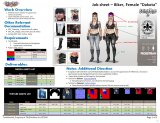btw do you happen to know what the 'P' stands for in texture map terms e.g S=specular, N=normal and so on but I have no idea what P is thats what im using to apply the logo's see
Should be pretty obvious. "P" stands for "pattern". That's the colored texture that controls which parts of the mesh are color-able.






